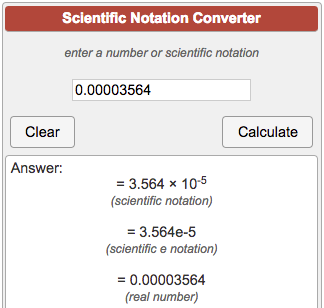
Where " c" is the said standard ratio, f₀ is the frequency of the open string, and f₁, f₂, and f₃ are the frequencies of the following notes while pressing on the 1st, 2nd, and 3rd frets, respectively.
MUSIC MATH CALCULATOR SERIES
And since, according to Pythagoras, any two adjacent notes should have the same common ratio, we can express this in a series of equations:Īnd so on and so forth. Plucking the new shortened scale length produces a higher frequency compared to just plucking an open string. In a string instrument, pressing on the string at the first fret shortens the scale length of the string. Since we can distinguish sounds through their frequencies, a change in the pitch of a sound also means a change in its frequency - the higher the frequency of a sound is, the higher its pitch is.Īdjusting a sound's pitch to predetermined frequencies is how we produce notes. Pythagoras, the same person who discovered the Pythagorean theorem of a² + b² = c², found that for a string instrument to sound its "best", any two adjacent notes played on the same string should have the same standard ratio.

Without further ado, here are the concepts: Today we worked on classifying sets of pitches into their “normal order,” and we will continue on to learn about a set’s “prime form,” which will also give us a chance to talk about prime numbers mathematically.Īll in all, I was quite pleased with the day’s work! It was, in many ways, a more challenging day than day one, but it was so interesting to see the things that they were interested in and wanted to explore.The fret placement formula is a combination of three equations, two of which are physics formulas, and the other is an assumption that we now consider standard. We will talk about mathematical set theory later this week. We wrapped up the day by beginning to talk about musical set theory. I am interested to read their thoughts tonight! The end of this particular reading gives an assertion of how Johann Sebastian Bach might have felt about the music of John Cage, specifically “4’33.”” Students wrote a brief response at the end of the day that asked them to address what they thought Bach would think of Cage.
MUSIC MATH CALCULATOR HOW TO
Somehow we ended up making equations that spelled YMCA, all of this out of a desire to understand how to move things left and right! I was quite amazed by student enthusiasm for the Desmos graphing calculator ( ). We will be looking at three of the dialogues from this book as jumping off places for musical and mathematical discussions. In the afternoon, we read our first excerpt from Godel, Escher, Bach: An Eternal Golden Braid by Douglas Hofstadter. Unfortunately, we did not have any violists in the room to argue for the necessity of alto clef! In addition to the treble and bass clefs, students learned that there are several other clefs that exist but are now rarely used.

The rest of the morning was spent learning about musical notation and intervals.
MUSIC MATH CALCULATOR TRIAL
I was impressed with how well the students worked to come up with their respective definitions of music! Of course the two sides will be presenting different definitions as they try to argue either in favor of or against “4’33”” being music, and I look forward to seeing how it plays out on Friday! We will begin each day with a period of trial research and preparations. We began Math and Music today by splitting up into two teams and laying the groundwork for our John Cage trial later in the week. Posted by hallep on Tuesday, Jin Grade 5, Grade 6, SAVY. SAVY 2019: Session 5, Day 2 – Math and Music (Rising 5th/6th)


 0 kommentar(er)
0 kommentar(er)
